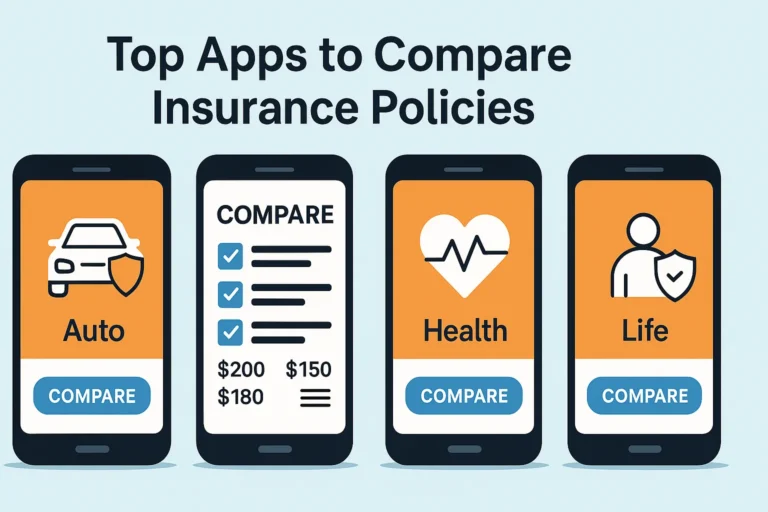Insurance is a fundamental aspect of modern financial planning, offering protection against unforeseen losses. One of the core elements that shapes policyholder decisions is the insurance deductible. Understanding how deductibles work, their historical evolution, current statistical trends, and industry comparisons is critical to making informed choices. This guide provides a comprehensive, data-driven exploration into insurance deductibles — what they are, how they affect premiums, and what to consider when selecting one.
Whether you’re purchasing health insurance, auto coverage, or a homeowners policy, this article will clarify key concepts, offer sector-specific insights, and help you align deductibles with your personal risk tolerance and financial capacity.
History and Evolution of Insurance Deductibles
The concept of the deductible emerged as a response to rising claims and the need to share risk between insurer and insured. Deductibles serve not only as a cost-sharing mechanism but also as a deterrent against minor claims. Initially introduced in property and casualty insurance in the early 20th century, deductibles have since become a staple in nearly all insurance sectors.
In the 1950s and 1960s, health insurers began experimenting with fixed-dollar deductibles. As medical technology and costs increased, so did deductibles. This shift was part of a broader trend toward consumer responsibility in healthcare spending. The 1980s and 1990s saw high-deductible plans emerge as a cost-containment strategy during a time of ballooning employer-sponsored health insurance costs.
In auto insurance, deductible amounts historically hovered around $100 to $250 for collision coverage. However, inflation and repair cost increases pushed average deductibles closer to $500–$1,000 by the early 2000s. Many insurers began offering customizable deductible options to allow policyholders to tailor coverage to their preferences.
Today, deductibles are not only widespread but also vary widely across insurance types and geographies. With the rise of digital underwriting and dynamic pricing, deductibles are increasingly used as tools for segmentation and behavioral incentive.
Current Data, Charts, and Table Insights
Analyzing current trends in deductible usage helps both insurers and consumers understand their role in shaping premium levels and claim behavior.
Table 1: Average Deductibles by Insurance Type in 2024 (USA)
| Insurance Type | Average Deductible | Standard Range |
|---|---|---|
| Health (Individual Market) | $2,825 | $1,500 – $7,050 |
| Auto (Collision) | $625 | $250 – $1,000 |
| Homeowners | $1,000 | $500 – $2,500 |
Table 2: Impact of Deductibles on Premiums (Sample Data)
| Deductible Level | Monthly Premium (Auto) | Monthly Premium (Health) |
|---|---|---|
| $250 | $210 | $580 |
| $500 | $170 | $450 |
| $1,000 | $140 | $350 |
These figures demonstrate the inverse relationship between deductible levels and monthly premiums, reinforcing the importance of choosing a deductible aligned with both budget and risk profile.
Sector-Based Comparisons
Health Insurance
Health insurance deductibles can significantly affect access to care. High-deductible health plans (HDHPs) are common in employer-sponsored coverage, especially in the U.S., where over 55% of enrollees in 2024 had plans with deductibles exceeding $2,000. While HDHPs offer lower premiums, they often delay treatment due to out-of-pocket burden.
Auto Insurance
In auto insurance, deductibles apply primarily to collision and comprehensive coverage, not liability. Many drivers opt for higher deductibles to reduce premiums, particularly in regions with low accident rates. However, this tradeoff can be risky for high-mileage or urban drivers where claims are more likely.
Property/Homeowners Insurance
Homeowners increasingly face percentage-based deductibles for natural disasters like hurricanes and earthquakes. For example, a 2% deductible on a $300,000 home equals $6,000 — far above a standard flat deductible. Understanding regional risk is critical when selecting these deductibles.
Forecasts and Future Expectations
Looking forward, deductibles are expected to continue evolving under the influence of inflation, climate change, and digital transformation in underwriting. According to a 2024 Deloitte Insurance Outlook, more than 70% of insurers plan to adjust deductible structures within the next five years to account for catastrophic risk and inflation-linked volatility.
In health insurance, the rise of telemedicine and value-based care may lead to more nuanced deductible models — such as condition-specific waivers or real-time deductible tracking. AI-powered risk scoring may also enable dynamic deductibles that adjust based on behavior or usage.
Moreover, climate-related disasters are prompting insurers to reconsider flat deductibles in favor of event-specific or tiered models. This trend is evident in wildfire-prone states like California and flood-prone regions of Southeast Asia.
Expert Opinions and Academic References
According to a Health Affairs article, rising deductibles have contributed to healthcare avoidance among middle-income populations, especially in markets lacking cost transparency.
Prof. John R. Graham of the National Center for Policy Analysis has noted that deductibles can help contain “moral hazard” in insurance — where consumers overuse services when they bear no cost — but must be balanced with affordability and clarity (NCPA.org).
Additionally, data from Insurance Information Institute and KFF support the notion that deductibles are rising faster than wage growth, highlighting the socioeconomic impact of deductible structures.
Conclusion and Summary
Understanding insurance deductibles is more than just knowing what you’ll pay out-of-pocket. It’s about grasping how this single figure impacts your financial protection, premium rates, and long-term affordability. Whether navigating a health plan, car insurance, or property coverage, aligning deductible levels with personal and regional risk is key to cost-effective and meaningful insurance use.
Modern consumers must analyze deductible options through a lens of data, sector-specific dynamics, and long-term cost-benefit thinking. By staying informed, you can better control your financial exposure without sacrificing protection.
Frequently Asked Questions (FAQ)
What is a deductible in insurance?
A deductible is the amount you pay out of pocket before your insurance begins to cover expenses. For example, if your deductible is $500 and your claim is $2,000, you pay the first $500 and the insurer pays the rest.
Is a higher deductible better?
It depends. A higher deductible usually means lower premiums, but also greater out-of-pocket cost in the event of a claim. It’s best for those with financial reserves and low risk profiles.
Do all insurance types have deductibles?
No. Liability coverage, for example, usually has no deductible. But most property, health, and auto policies include them for coverage elements involving your own losses.
Can deductibles be waived?
Yes. Some policies offer deductible waivers under special conditions — like accidents with uninsured drivers or certain natural disasters. Read your policy carefully or consult your insurer.
How often do I pay a deductible?
Typically, you pay a deductible per incident or claim, not per month or year (with exceptions like annual health insurance deductibles).






